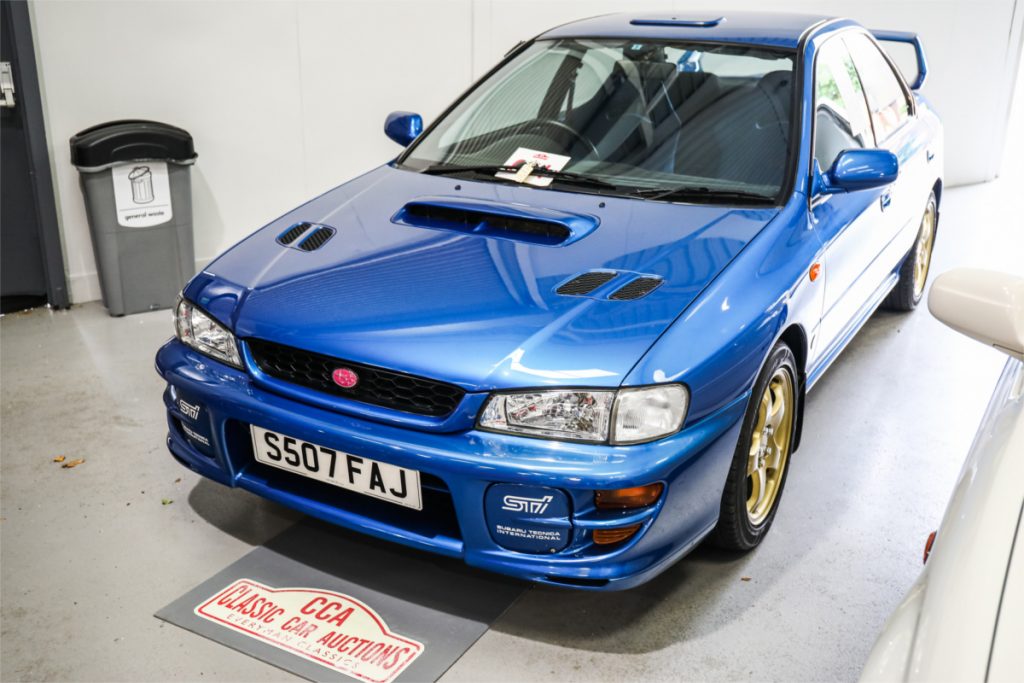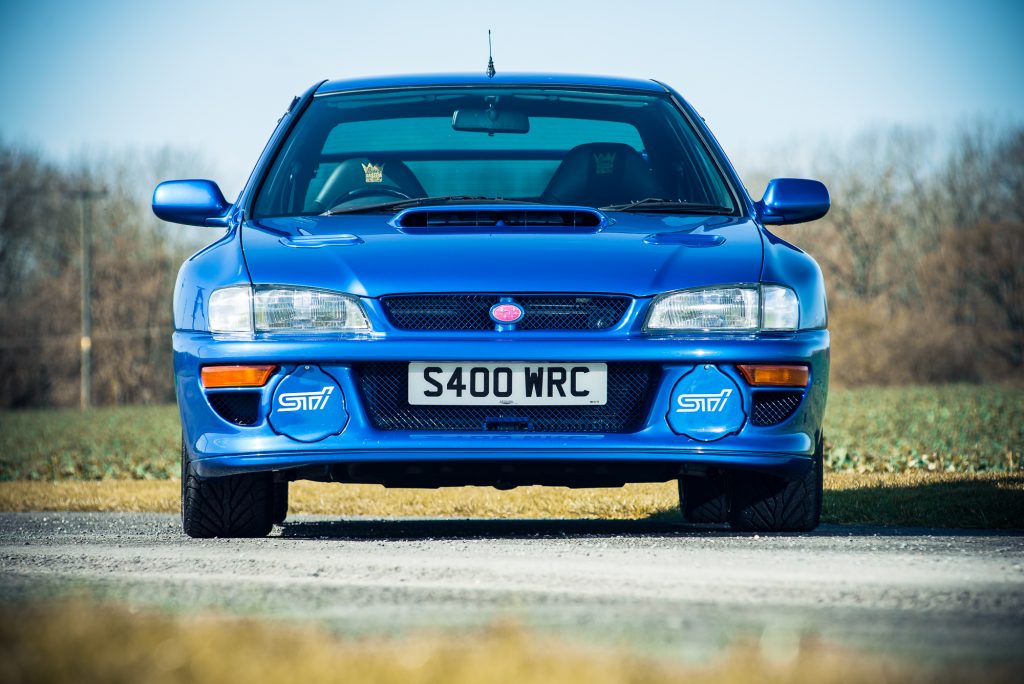The JDM scene is an eclectic and, to an outsider at least, eccentric world. As someone who is part of that scene, and has owned cars like the Toyota Celica, I should know.
From unfeasibly tiny Kei cars like the Suzuki Cappuccino to everyday wonders like the Mazda MX-5 and Honda Civic Type R, Japanese manufacturers have produced a winning take on just about everything from the lightweight roadster to the drift special, the road-going rally epic, the supercar and – less exciting but arguably most significant – the workaday family SUV.

So in some ways that makes it difficult to pick five of the greatest JDM cars. Where do you even begin to start? For anyone looking to join the scene and own a Japanese performance car, there is, if anything, almost too much choice, if choice could ever be considered a bad thing.
Suffice to say that the simplest way to approach it is to consider the cars that are the performance titans of the JDM scene. And when it comes to the rush of turbo power, the high-revs of a rotary engine, the response of a mid-engined sports car or the all-weather performance of all-wheel drive, the JDM scene has it covered.
Over the years spent working with Autocar and What Car?, as well as being a freelance journalist, I’ve driven plenty of the best. Here are five worth hunting down.
Mazda RX-7 Mk3
I know that this is a left-field choice. After all, I’ve skipped the Honda S2000 and Integra Type-R – a star of this year’s Hagerty Bull Market report – the Nissan 200SX and Mazda’s own legendary MX-5 to put this swoopy, rotary-engined delight in the top five. But the Mazda RX-7 FD really does look like Batman’s weekend car even if it isn’t modified – which it often was.
It was such a brave car from Mazda, one of Japan’s smaller car manufacturers, in every possible way. Its powertrain departed from any other accepted combustion engine format in mass production, and brought novel and fiendishly complex sequential turbocharging together with a rotary engine.
Meanwhile the wide and curvaceous body fell outside of regulations in Japan’s domestic market, making it painfully expensive to buy and tax – both at home and elsewhere in the world. In the UK, when launched in 1992 it retailed at some £35,000, but was dropped to £27,000 a year later to encourage sales. Even so, only 210 examples were sold between 1992 and 1995, and it was only later – after Mazda stopped official sales – that new SVA regulations made the RX-7 a popular grey import option in the UK.
So no, the RX-7 is not an obvious choice for this selection of great JDM cars, but its defiant individuality encapsulates the JDM spirit – ever unafraid to be different to the rest of the world. Plus, it was just great. With its 252bhp, Wankel engine, drift-happy handling and Coke-bottle styling, it is at the peak of ‘90s scene.
Toyota Supra Mk4
The A80 Toyota Supra is to the JDM scene what the Ford Mustang is to classic Americana. You can hardly think of one without thinking of the other.
Not just a poster child for its unmistakable sharky shape and big-winged flourish, it also really defined the big-hitting underdog character of the Japanese performance scene, offering supercar pace that delivered a shocking blow to household names like the BMW M3 and Porsche 911. The Supra brought it home to the establishment that Japan was a serious force in the global performance car market.
And it’s not just thanks to the early Fast and Furious films; the A80 Toyota Supra was an established legend long before that. Introduced in 1993, it was offered in naturally-aspirated or twin-turbocharged variants, the latter being the 180mph, sub-5.0sec supercar-slayer that really forged the Supra’s place in the performance car hall of fame (albeit electronically limited to 155mph).
It wasn’t just about outright pace, either. With the classic cabin-aft, front-engined, rear-wheel drive layout and Toyota’s engineering prowess, it offered GT styling, fulsome handling and gutsy performance.
Subaru Impreza WRX STi MkI
The Subaru Impreza is impossible to overlook in the JDM landscape. As with many other heroic Japanese performance cars, its headline trick was in offering blazing pace for far less than it would have cost if walking into an Audi or BMW showroom. But the Subaru Impreza is so much more than that. Spurred on by the dramatic progress of Colin McRae in the WRC, the Impreza’s success was rooted in the popularity of the legendary Scottish rally driver, but also in the basic appeal of the Impreza STi.
For not all that much more money than you’d spend on a Golf GTI here was something that you could even buy as an estate, yet the 2.0-litre turbocharged boxer engine and permanent all-wheel drive delivered the sort of all-season point-to-point pace that embarrassed sports cars costing twice as much.
Sold between 1993 and 2000 in the UK, the Impreza WRX STi had various tweaks, power boosts and special editions – including the rare, limited edition three-door P1 and 22B variants.
Mind you, the Impreza wouldn’t be the household name that it is without the fierce competition from the Mitsubishi Lancer Evolution. If I’d had a sixth spot here, the Evo VI – especially the painfully cool Mäkinen edition – would have been it. As it is, the ageless Impreza gets the nod. Or maybe the Honda Integra Type-R should have had it. Or the MX-5. See what I mean? You’re spoilt for choice.
Honda NSX MkI
The NSX was the ultimate poster child of Japanese performance cars, yet oddly also one of the most European-feeling of the JDM elite. During the ’90s, Honda bucked the trend for high-powered turbocharged engines that defined many brands – Japanese or otherwise. Instead, it stuck to its belief in the purity and linear delivery of naturally-aspirated engines, and the NSX was the ultimate expression of that purist philosophy, and the ultimate expression of VTEC.
In fact, the NSX was as purist as it gets. Majoring on aerodynamics and light weight, its shape and styling were inspired by the cockpit of an F-16 fighter jet. It was also the first mass-produced car with an all-aluminium body and engine, the latter being a 3.0-litre V6 with Honda’s famous VTEC variable valve timing.
As if that weren’t enough, the NSX’s chassis development was aided by none other than Ayrton Senna. You couldn’t get a more hallowed name in association with your supercar, yet even if the NSX hadn’t become synonymous with Senna, Honda would have proven its point. The NSX’s handling spoke for itself and lived up to all of the hype; delicate, beautifully balanced and filled with the sort of feel and nuance that had previously only been expected from the likes of Ferrari and its peers, the Honda NSX proved that even the purist supercar wasn’t beyond the prowess of the JDM scene.
Nissan Skyline GT-R MkIV
The Skyline name has been around for longer than most would realise, dating back to 1957 and the Prince Motor Company. It wasn’t until 1969 that the first Nissan Skyline GT-R arrived, but the version that’s really the wasabi for your sushi platter is the R34, or fourth generation.
Not only did the R34 Nissan Skyline GT-R manage to look butch yet perfectly proportioned, it also blended playful all-wheel drive handling with rabid pace courtesy of a 2.6-litre twin-turbocharged straight-six. UK cars were different to those offered in any other market, with the ECU, engine cooling, gearbox and more all tweaked, although grey imports are plentiful.
Legend has it that the claimed 276bhp output of the GT-Rs officially sold in the UK was an exercise in sandbagging to help it skirt Japanese tax rules, and most who experienced the 0-60mph time of 4.6sec reckoned it had far more power. It unquestionably did once tuners got their hands on it.
It’s one reason why the GT-R takes the top spot here, since so much of what makes the JDM scene colourful and fun relates to its embrace of modified car culture. More than that, it combined the brute pace and unmistakable looks of all-wheel drive JDM at its best, with the sort of meaty yet textural handling that few expected outside of elite European machinery. It had it all. And it bred the R36 Nissan GT-R, the only car that made me question putting the R34 in top spot.
In the end, the R34 had to have the top spot. It was only sold for three years from 1999, but those looks, the way it drives, the automotive culture that it embodies, the whiff of nostalgia, and knowing that this is a car which would still be better to drive than most modern performance cars… The R34 Nissan Skyline GT-R is, without doubt, JDM at its best.
























